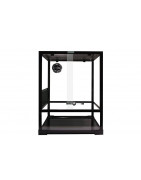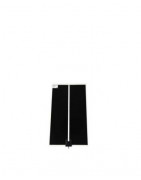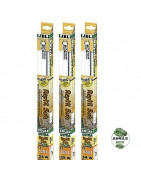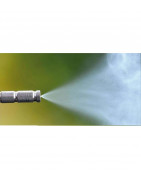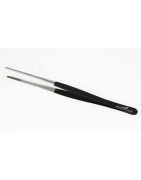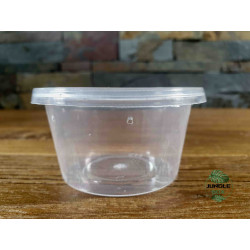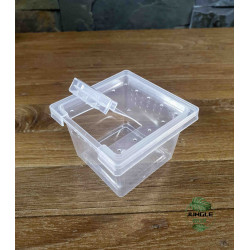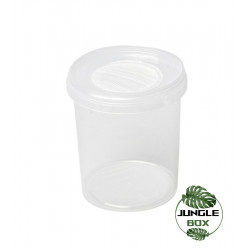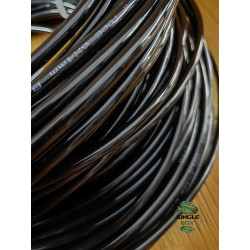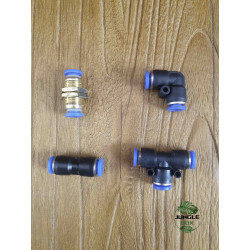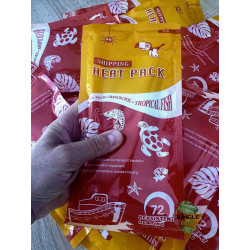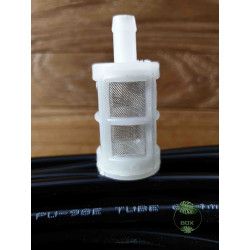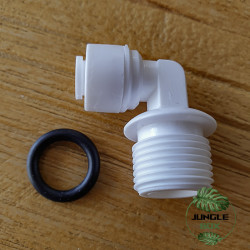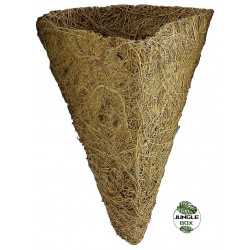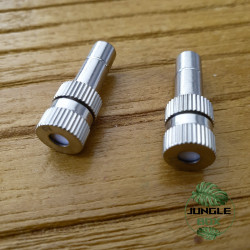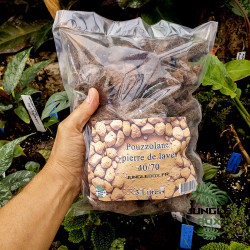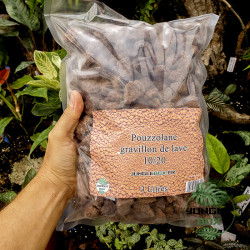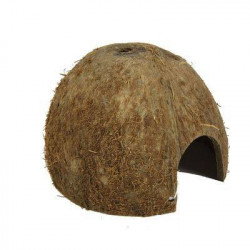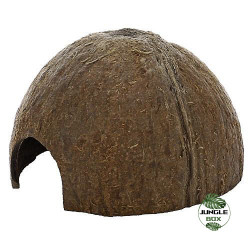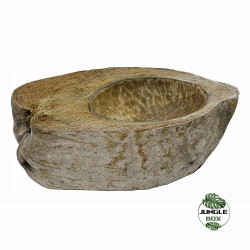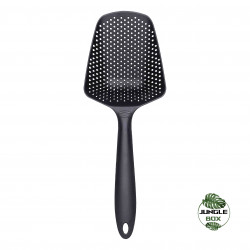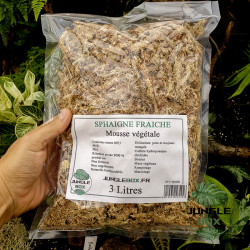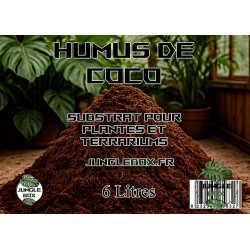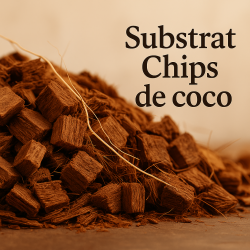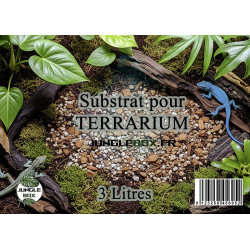Terrario
The interest in terrarium keeping lies in the ability to create and maintain living environments for a wide variety of reptiles, amphibians, and invertebrates. It provides enthusiasts with a fascinating experience of observing and studying these animals in a controlled environment. Terrarium keeping also offers an opportunity for education and awareness about the conservation of these species, as well as their behavior and specific habitat needs. Additionally, it allows enthusiasts to exercise their creativity by designing unique setups and learning to maintain a balanced ecosystem.

Subcategories
-
Alimentation
"Explore our range of reptile food. Provide your scaled companions with balanced nutrition with our high-quality products, including live foods, vitamin supplements, and specially formulated feeds tailored to the nutritional needs of reptiles."
-
Terrarium
The range of terrariums includes different types and sizes of terrariums, suitable for various needs and preferences. Here are some examples of the range of terrariums available:
-
Classic glass terrariums: These terrariums are usually rectangular or cylindrical, with transparent glass walls. They come in a variety of sizes and are suitable for a wide range of plants.
-
Hanging terrariums: These terrariums are designed to be suspended from the ceiling or a wall mount, creating a unique vertical display for plants.
-
Geometric terrariums: These terrariums have geometric shapes such as cubes, pyramids, or polyhedra, adding a modern touch to your interior decor.
-
Open terrariums: These terrariums do not have a lid, allowing for maximum air circulation. They are suitable for plants that prefer a less humid environment.
-
Closed terrariums: These terrariums have a sealed lid that creates a humid and warm environment, ideal for tropical plants and species requiring a high level of humidity.
-
Specialized terrariums: There are also terrariums designed specifically for reptiles, amphibians, or other animals, with features such as bathing areas, hiding spots, and heating zones.
The range of terrariums offers a variety of options to meet different aesthetic and functional needs, whether for home decoration, plant cultivation, or animal housing.
-
-
Accessories
The range of reptile heating options includes various methods and products designed to provide appropriate warmth for reptiles in captivity. Here are some examples:
-
Heat lamps: These lamps emit infrared heat and are commonly used to create basking spots for reptiles. They come in different wattages and sizes to accommodate various terrarium setups.
-
Ceramic heat emitters (CHEs): These are heat-emitting bulbs that produce heat without emitting light. They are often used as a supplemental heat source, especially at night when reptiles still need warmth but do not require additional light.
-
Under-tank heaters (UTHs): These are heating pads or mats that are placed under one side of the reptile's enclosure. They provide a localized heat source and are particularly useful for reptiles that require belly heat, such as snakes.
-
Heat tape: This is a flexible heating element that can be attached to the underside of the terrarium to provide uniform heating. It is often used in larger enclosures or custom-built reptile habitats.
-
Heat rocks: These are artificial rocks with built-in heating elements. While they can provide warmth, caution should be exercised as they may cause burns if not properly regulated and monitored.
-
Radiant heat panels: These are flat panels that emit infrared heat and can be mounted on the ceiling or back wall of the terrarium. They provide gentle, even heat and are suitable for larger enclosures or specific reptile species.
-
Thermostats and temperature controllers: These devices are essential for regulating and maintaining the temperature inside the terrarium. They allow for precise control of heating elements to ensure the reptiles' comfort and safety.
The range of heating options for reptiles allows reptile keepers to create appropriate thermal gradients within the terrarium, mimicking the natural temperature variations found in their native habitats. It's important to research and select the right heating method for your specific reptile species and terrarium setup to ensure their health and well-being.
-
-
paludarium waterfall
Paludarium waterfall designed to reproduce a natural tropical environment with continuous water circulation
Seamless integration of rock, moss and vegetation for a realistic and aesthetic finish
Ideal structure for tropical terrariums, amphibians, reptiles and epiphytic plants
Durable materials and secure water system for long-term use
Provides humidity, oxygenation and stable microclimate for the terrarium ecosystem
Easy installation and low-maintenance operation for continuous performance
Perfect accessory to enhance biodiversity and animal well-being in captivity -
Eclairage
The range of reptile lighting includes various products designed to provide the necessary illumination for captive reptiles. Here are some examples:
-
UVB Bulbs: These bulbs mimic the sun's rays needed for reptiles to synthesize vitamin D3 and maintain optimal bone health.
-
UVA Bulbs: These bulbs provide ultraviolet type A light, similar to sunlight, to help reptiles maintain their natural behavior and overall well-being.
-
Heat Bulbs: These bulbs provide heat without necessarily emitting light, creating warm basking spots in the terrarium for reptiles that require additional warmth.
-
LED Lighting: LED lights are efficient and energy-saving, offering bright and long-lasting illumination for the terrarium while promoting plant growth.
-
Fluorescent Light Bars: These fluorescent tubes provide uniform lighting over a large area, ideal for large terrariums housing multiple reptiles or plants.
-
LED Spotlights: These spotlights produce intense and focused light, ideal for creating precise basking spots in the terrarium.
-
Light Controllers: Programmable light controllers simulate natural day-night cycles, providing reptiles with a regulated lighting environment that promotes their well-being.
With a diverse range of reptile lighting options, you can create an environment suitable for your reptiles and plants, ensuring to provide appropriate light levels for their health and natural behavior.
-
-
Brumisation
Terrarium misting is a technique used to increase the humidity levels inside the habitat of plants or animals, replicating the natural conditions of certain tropical or humid environments. Here are some key points to know about terrarium misting:
-
Operation: Misting is done using a water spray system that disperses fine droplets into the air of the terrarium.
-
Frequency: The misting frequency depends on the specific needs of the plants or animals housed in the terrarium, as well as the ambient climate. Generally, it can be done once to several times a day, depending on the required humidity level.
-
Timing: Misting can be scheduled at specific times of the day to simulate natural conditions, such as early morning or late afternoon.
-
Duration: The misting duration can vary depending on the needs, but it is typically short to avoid excess moisture and the formation of mold or rot.
-
Equipment: There are automated misting systems specifically designed for terrariums, as well as manual sprayers or spray bottles for manual application.
-
Humidity Control: It's important to monitor the humidity level inside the terrarium using a hygrometer and adjust the misting frequency and duration accordingly to maintain optimal conditions.
-
Precautions: Avoid excessively saturating the terrarium with moisture, as this can promote the development of fungal or bacterial diseases and harm the health of plants or animals.
In summary, terrarium misting is an important practice to create an environment suitable for tropical or humid species
-
-
Déco
"Explore our comprehensive range of decorations and natural landscaping for terrariums. Create captivating and authentic environments for your plants and animals with our carefully selected rocks, branches, substrates, live plants, and other decorative elements."
-
Accessoire
"Discover our range of accessories for reptiles and amphibians. Enhance the habitat of your scaly and aquatic friends with our selection of high-quality products, including heating and lighting equipment, terrarium decorations, feeding dishes, and habitat maintenance tools."


